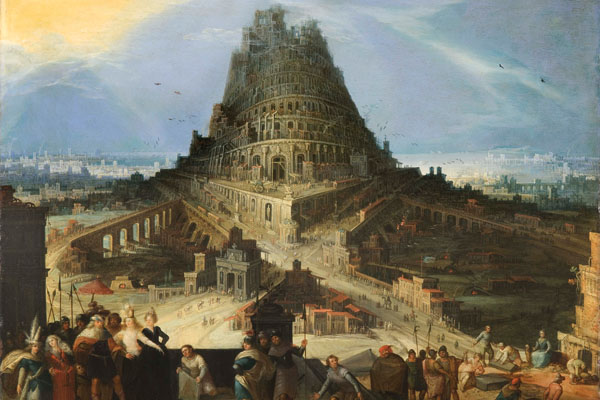If you want to see how myths arise from misunderstandings, the Tower of Babel provides a textbook example. In ancient Assyrian babilu means ‘door of God’ and thus correctly describes the Babylonian ziggurat erected to the god Marduk by Nebuchadnezzar II and later seen in ruins by Herodotus. But in Hebrew the word bâlal means ‘to confuse’, hence the confusingly different account in Genesis. In this version, men come together in the cradle of civilisation to build ‘a tower, whose top may reach unto heaven’ as a monument for posterity, lest they be ‘scattered abroad upon the
face of the whole earth’ — and God, sensing that ‘this is only the beginning of what they will do’, sends down a software bug to corrupt their communal language and scatter them before they finish the job.
It’s from this muddle that Babel emerges as the ultimate symbol of architectural hubris, a subject first represented in Flemish art in the 16th century. Early images of the tower form the high point of the exhibition of Flemish Landscape Fables just opened at the Palais des Beaux-Arts in Lille as part of a citywide arts festival on the theme ‘Fantastic’. Bringing together 100 works by Bosch and Brueghel and their followers, the show examines the curious role of fantasy in the development of the landscape genre north of the Alps.
While early Venetian landscapes idealised reality, early Flemish landscapes distorted it. To the Flemish, landscape was a blank canvas on which the artist’s imagination was free to roam. Even the father of Flemish landscape painting, Joachim Patinir, who was born in Brittany and knew what hills looked like, took fantastic liberties with geological reality. But stranger than the geological features of many of these landscapes were their flora and fauna.








Comments
Join the debate for just £1 a month
Be part of the conversation with other Spectator readers by getting your first three months for £3.
UNLOCK ACCESS Just £1 a monthAlready a subscriber? Log in